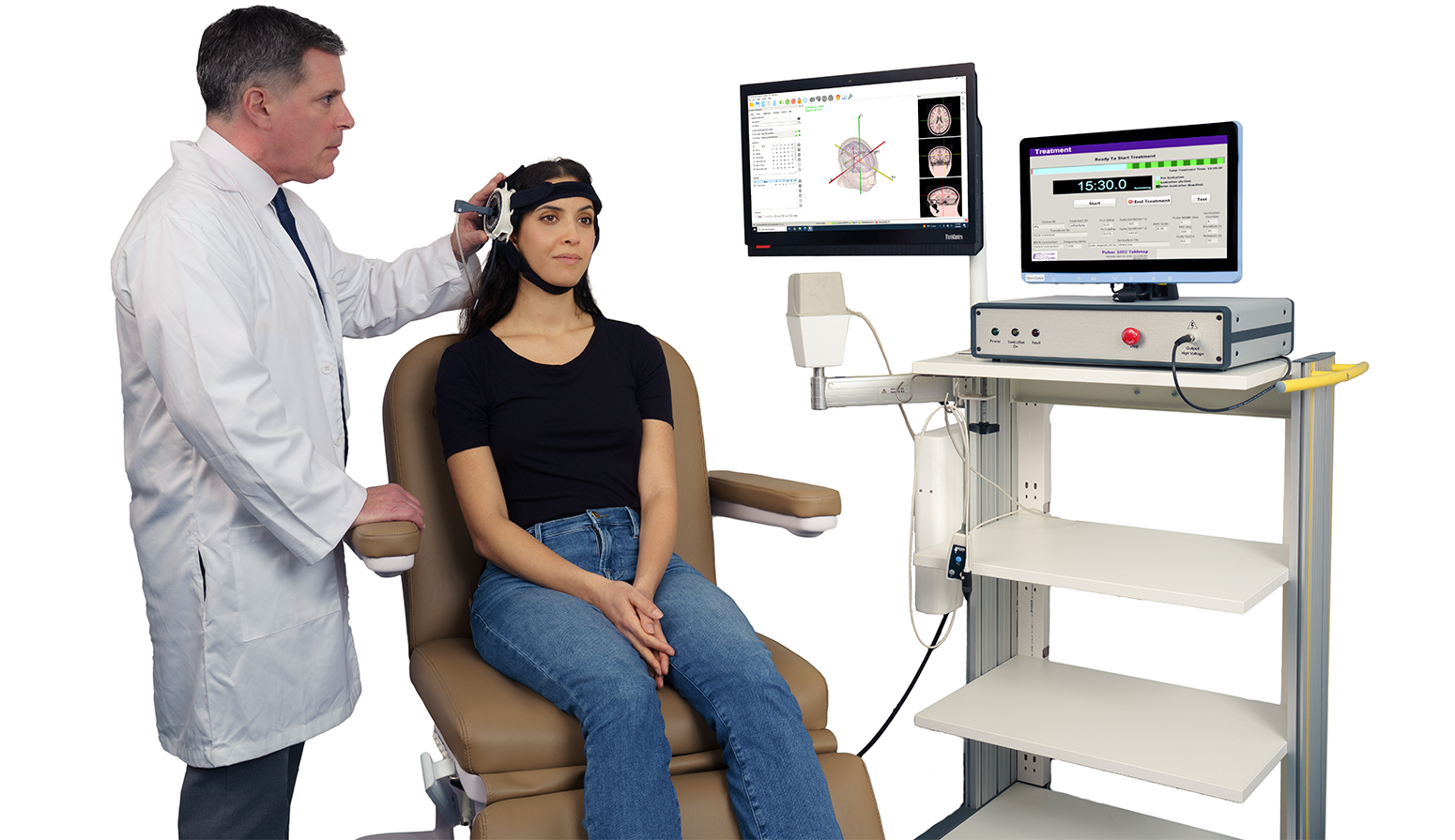The BrainSonix system comprises the ultrasound console (stimulator), transducer with ground-breaking “clipping” mechanism, transducer holder, and coupling pads. The system is fully integrated (i.e. enclosure and monitor) allowing portability and tabletop operation. The stimulator includes an all-in-one computer with an ultrasonic drive generator. The ultrasonic drive voltage is provided through a BNC port on the front panel. Upon entering the desired exposure parameters (pressure, average intensity, pulse length, pulse repetition frequency, sonication duration, intersonication time, and number of sonications), the system automatically calculates the voltage required to meet those settings (Schafer 2021).
Four different circular, single-element, spherically focused transducers are available with an aperture of 61 mm. Nominal focal lengths of 35, 55, 65, and 80 mm are provided for targeting different regions of the brain. The transducers include a slightly convex front layer for optimal impedance matching.
The transducer holder attaches the transducer firmly to the head above the temporal window. It allows both angular and linear displacement to accurately target intended structures.
MR synchronization is provided via a fiber optic input line and optically isolated digital signal line (TTL). EEG synchronization is also provided either via TTL or optical signal.
 Transcranial Focused Ultrasound Stimulation
Transcranial Focused Ultrasound Stimulation 










